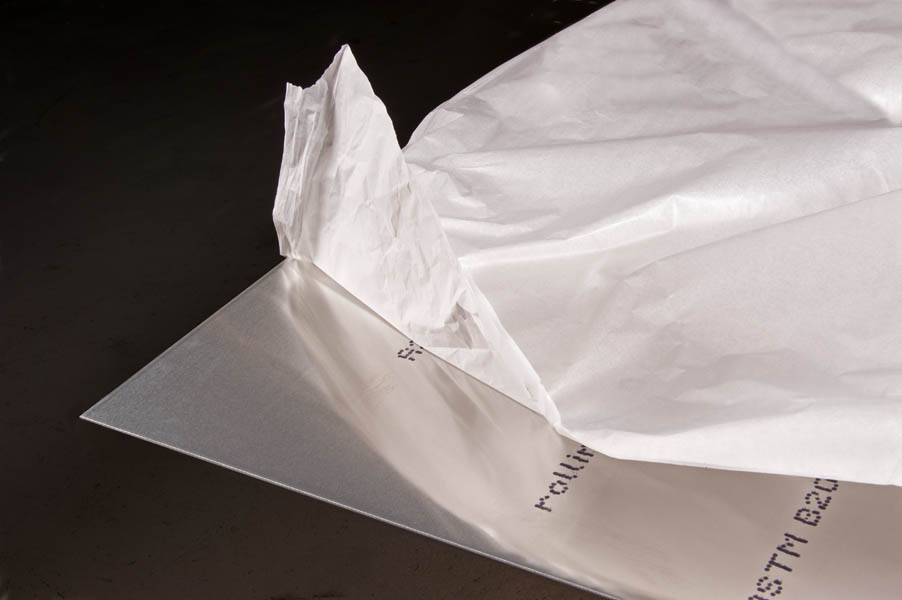Understanding the Differences: 3003 vs 6061 Aluminum

Cut2Size Metals provides aluminum in two commonly used aluminum alloys: 3003 and 6061. When choosing the right type of aluminum for your project, understanding the differences between the alloys is crucial. Each of these aluminum types has its unique properties, making them suitable for different applications. Let's dive into the characteristics that set 3003 and 6061 aluminum apart.
Composition and Basic Properties
3003 Aluminum is part of the so-called "manganese alloy" family. Its composition includes about 1.2% manganese, which increases the strength of this alloy over the commercially pure aluminum series (1000 series). 3003 is known for its excellent corrosion resistance, formability, and welding characteristics. It's softer and more formable than 6061 aluminum (when drilled and tapped, it is like chewing gum), making it ideal for applications requiring a high degree of formability, such as in the manufacture of chemical processing equipment, ductwork, and general sheet metal work. Cut2Size Metals offers 3003 Aluminum in plate, sheet, diamond plate, pattern sheet, and expanded metal.6061 Aluminum, on the other hand, belongs to the "magnesium and silicon alloy" family. This combination results in a heat-treatable alloy that is versatile with a high strength-to-weight ratio (it is known as the workhorse of heat-treat alloys). Its composition allows it to be joined by all methods and is easily machinable in its tempered state. 6061 is known for its structural strength, and its relatively high resistance to corrosion. It is important to note that 6061 sheet can crack if it is formed to 90 degrees. Larger angles still need to be formed by experienced sheet metal workers to avoid cracking. (Need help with a project? Contact our customer service team to learn more about Cut2Size Metals custom fabrication capabilities.) It's the go-to choice for structural components, bicycle frames, automotive parts, marine fittings, and even some aerospace applications. Cut2Size Metals offers a wide rage of products in the 6061 aluminum alloy: plate, sheet, diamond plate, pipe, round tubing, rectangle bar, round bar, square bar, angle, and channel.
| Characteristics | 3003 | 6061 |
| Machinability | Good | Good |
| Corrosion Resistance | Excellent | Good |
| Weldability | Excellent | Excellent |
| Bending/Forming | Excellent | Fair |
| Magnetic | No | No |
| Heat Treatable | No | Yes |
Mechanical Properties
The mechanical properties of aluminum alloys are a critical aspect of their performance. 3003 Aluminum is less strong than 6061 but provides superior formability and welding properties. It's also more ductile, allowing it to be drawn or formed into intricate shapes more easily than 6061.6061 Aluminum is significantly stronger and more durable than 3003, making it suitable for applications that require high strength and hardness. Despite its strength, 6061 maintains good formability and weldability under the right conditions.
Applications
The choice between 3003 and 6061 aluminum often comes down to the specific requirements of the application.Common applications of alloy 3003:
3003 aluminum is frequently used where its excellent corrosion resistance and formability are beneficial.- General sheet metal work, including roofing, gutters, and siding.
- Cooking utensils and kitchen equipment.
- Trim, awnings, and architectural applications.
- Ductwork.
- Truck and trailer parts.
- Storage and fuel tanks.
- Chemical processing equipment and tanks.
- Pressure vessels.
- Signage and mailboxes.
- Heat exchangers in HVAC systems, radiators, and air conditioning units.
Common applications of alloy 6061:
6061 aluminum finds its way into applications where strength, toughness, and resistance to corrosion are paramount.- Aerospace: Aircraft components, including fuselages, wings, and structural parts.
- Automotive: Wheels, frames, suspension components, and engine parts.
- Structural applications.
- Production of sailboat, canoe, truck, and bus bodies.
- Scaffolding and transmission towers.
- Furniture.
- Marine fittings, hardware, boat hulls, and masts.
- Chemical equipment and hardware.
- Bike frames.
Summary
The decision between 3003 and 6061 aluminum alloys should be based on your project's specific needs – each has their place in manufacturing and construction. It comes down to factors such as strength, workability, corrosion resistance, and the type of forming or fabrication methods you plan to use. Whether you're building a high-performance machine or creating architectural elements, understanding these differences can help you choose the right aluminum alloy for the job.Shop Aluminum 3003 and 6061
3003
Plate | Sheet | Diamond Plate | Pattern Sheet | Expanded Metal6061
Plate | Sheet | Diamond Plate | Pipe | Round Tubing | Rectangle Bar | Round Bar | Square Bar | Angle | ChannelCut2Size Metals provides general properties and typical uses for the alloys we carry, however, the suitability of a material for any application or the manner of its use is the sole responsibility of the customer. If you have specific requirements for your application, we strongly suggest contacting us before purchasing.
Learn More
Guide to Aluminum Sheet Alloys & Tempers
Guide to common aluminum alloys and tempers, including 6061-T6 and 3003-H14.
Read More
Guide to Copper Sheet, Bar, & Round
A guide to help you determine which Copper alloy is right for your application.Read More
How do you get your material Cut2Size?
3 Easy steps to getting your metal custom cut.
Read More

Categories